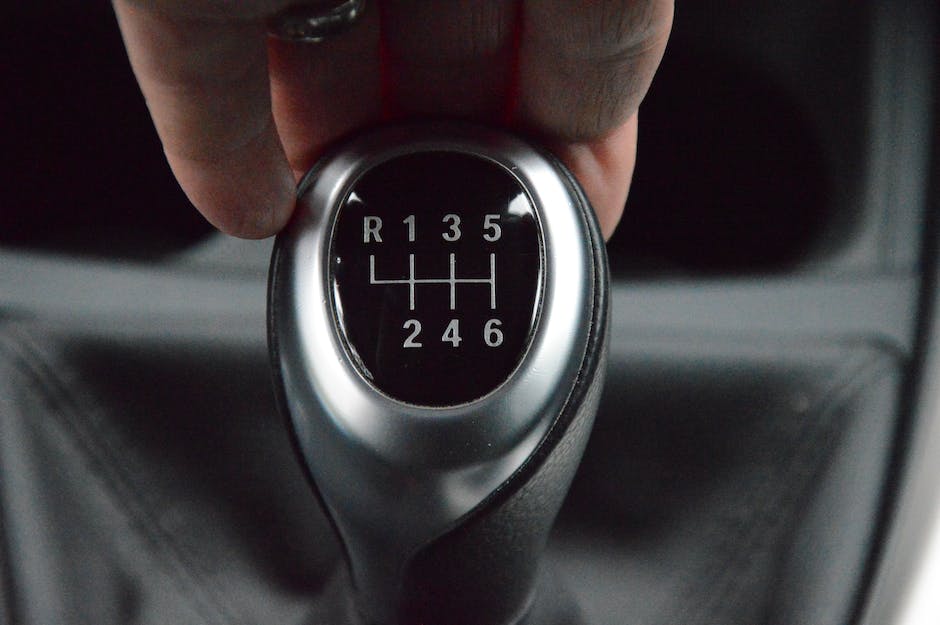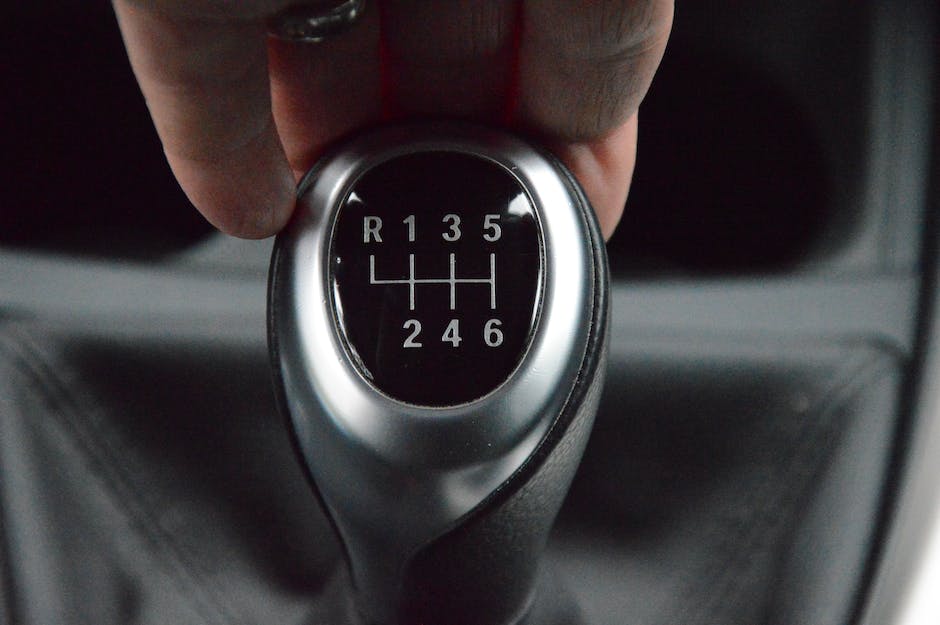A transmission is a vital component of your vehicle that helps transfer the power generated by the engine to the wheels, allowing the car to move. There are several types of transmissions available in modern vehicles, and understanding their differences can help you make better choices when purchasing a car or maintaining your vehicle. In this guide, we will discuss four main types of transmissions: manual, automatic, continuously variable (CVT), and dual-clutch.
Manual Transmission
Manual transmissions, often called “stick shift” or “manual gearbox,” require the driver to manually change gears while driving. They come with a clutch pedal and a gear shift lever, which the driver uses to select the appropriate gear based on driving conditions.
- Pros:
- Greater fuel efficiency compared to automatic transmissions
- More control over the vehicle’s performance
- Often less expensive than vehicles with automatic transmissions
- Cons:
- Requires greater driver skill; beginners might find it challenging
- Can be tiresome to use in heavy traffic or on hills
Automatic Transmission
Automatic transmissions do the gear shifting for you, making driving easier for most people. They use a torque converter to transfer power from the engine to the transmission, smoothly shifting gears as needed based on speed and throttle input. Automatic transmissions have a gear shift lever, usually labeled with letters like ‘P’ for park, ‘R’ for reverse, ‘N’ for neutral, and ‘D’ for drive.
Continuously Variable Transmission (CVT)
Continuously Variable Transmissions (CVTs) are a type of automatic transmission that do not have fixed gear ratios. Instead, they use a system of pulleys or belts to vary the gear ratio infinitely within a given range. This allows the engine to maintain an optimal speed for fuel efficiency or performance.
- Pros:
- Smoother acceleration due to seamless gear changes
- Often more fuel-efficient than traditional automatic transmissions
- Cons:
- Some drivers may not like the different feel of a CVT
- Can be less responsive during quick acceleration or when climbing hills
Dual-Clutch Transmission (DCT)
Dual-Clutch Transmissions (DCTs), also known as dual-clutch automated manual transmissions, combine aspects of both manual and automatic systems. They use two separate clutches that control odd and even gear sets, allowing for faster and smoother gear shifts.
- Pros:
- Faster gear shifts compared to traditional automatics
- Increased fuel efficiency due to efficient power transfer
- Provides manual gear control without the need for a clutch pedal
- Cons:
- Can be more expensive than other transmission types
- Repairs and maintenance costs can be higher due to complex design
Now that you have a better understanding of the different types of transmissions, you can make more informed decisions when buying a vehicle or maintaining your current one. Each type has its advantages and drawbacks, so consider your driving needs, preferences, and budget when selecting the right transmission for you.

Photo by asyrafunk on Unsplash
Checking Your Transmission Type By VIN Number
Step 1: Locate Your Vehicle Identification Number (VIN)
Your Vehicle Identification Number (VIN) is a unique 17-character code that can be found on various parts of your vehicle. To find your vehicle’s VIN, look for the following locations:
1. Dashboard – The VIN can be found on the driver’s side of the dashboard, visible through the windshield from outside the car.
2. Door Frame – Open the driver’s side door and look for the VIN on a sticker or metal plate on the door frame.
3. Engine Block – Lift the hood and find the VIN engraved on the engine block.
4. Vehicle Registration and Title – Your vehicle registration card and title both contain the VIN.
5. Owner’s Manual – The VIN is often listed in your vehicle’s owner’s manual.
Step 2: Understand How the VIN Contains Information About Your Vehicle’s Transmission
Each character in your vehicle’s VIN represents specific information about your car. The character that signifies information about your transmission is typically the 10th digit, although this can vary for some makes and models. Here’s a quick breakdown of the characters in a VIN and what they represent:
1. First three characters: The World Manufacturer Identifier (WMI) – This code represents the manufacturer and the country where the car was built.
2. Characters 4-8: Vehicle Descriptor Section (VDS) – These characters provide details about the vehicle, including the model, body style, and engine type.
3. Character 9: Check digit – This character is used as a security measure to verify the validity of the VIN.
4. Character 10: Model year – This character represents the vehicle’s model year.
5. Character 11: Plant code – Represents the manufacturing plant where the vehicle was assembled.
6. Characters 12-17: Vehicle Identifier Section (VIS) – These characters are unique to each specific vehicle and include information about its production.
To determine what transmission your vehicle has, you’ll need to find the character within the VIN that corresponds to your vehicle’s transmission. This is typically the 10th character, but you’ll need to consult a VIN decoder or your vehicle’s manufacturer to be sure.
Step 3: Decoding Your VIN for Transmission Information
You can use an online VIN decoder to find information about your vehicle, which generally includes the transmission type. Here’s how:
1. Search for a reputable VIN decoder online – websites such as the National Highway Traffic Safety Administration (NHTSA) or various automotive-related sites offer free VIN decoding services.
2. Enter your VIN into the VIN decoder – simply copy and paste or type your VIN into the search field.
3. Review the decoded information – the decoded VIN will display various details about your vehicle, including the transmission type.
Step 4: Verifying Your Vehicle’s Transmission
In some cases, the VIN may not explicitly list your vehicle’s transmission type. If this occurs, consult your vehicle’s owner’s manual or contact your local dealership with your VIN. They can help provide the specific transmission information for your vehicle.
Remember, the process of locating your VIN and understanding your vehicle’s transmission type may slightly differ between different makes and models. Always be sure to consult your vehicle’s owner’s manual and verify information with a trusted source, such as a dealership or mechanic.

Transmission Identification Numbers
Gather the necessary tools:
Before you begin your search for your transmission’s identification number, make sure you have a flashlight, a rag or paper towel, and a smartphone or notebook for recording the information.Park your vehicle on a level surface: Ensure the vehicle is parked on a level surface to safely examine the underside of the car. Make sure the engine is off, the parking brake is engaged, and the car is in gear or “park” if it’s an automatic transmission.
Locate your transmission:
Get under your vehicle and look for the transmission, which is usually bolted to the rear of the engine. It should have a bell housing that connects with the engine and a tail housing that extends towards the rear of the car. The transmission pan is another key identifier – most transmissions have a pan on the bottom, which can have varying shapes, depending on the model.
Locate the identification number or tag:
Transmission identification numbers or tags can be located in various places, depending on the make and model of your vehicle. Common locations include: a. On a metal tag or sticker attached to the side of the transmission’s bell housing (often found on automatic transmissions). b. Cast or stamped directly into the transmission case, usually towards the rear or bottom of the transmission (often found on manual transmissions).
Clean the area:
If the transmission identification number or tag is covered with dirt, oil, or grease, use your rag or paper towel to carefully clean the area, ensuring that you can read the number clearly.Record the number: Once you have located and cleaned the identification number, use your smartphone or notebook to write down or take a photo of the number. Be sure to double-check the accuracy of the number you’ve recorded.
Search for information:
Use the recorded identification number to search online or consult a reputable transmission specialist, automotive parts supplier, or your vehicle’s manufacturer to determine the specific transmission model you have. They can use the transmission identification number to provide you with more information about your specific model, including its age, compatibility, and any potential recall issues.

Online Transmission Identification
Gather your vehicle’s information:
Before you begin your online search, make sure you have all the necessary information about your vehicle. This includes the make, model, year, and if possible, the VIN (Vehicle Identification Number) of the automobile.
Visit a reputable automotive database website:
There are many online resources that can help you identify your transmission, but it’s important to choose a platform with a good reputation in the industry. Some popular options include the National Highway Traffic Safety Administration’s Vehicle Identification Number Decoder (www.nhtsa.gov), and CarFax (www.carfax.com).
Use the search function:
On your chosen website, locate the search tool that will allow you to input your vehicle’s information. This may be a search bar or a series of drop-down menus where you can select your vehicle’s make, model, and year. In some cases, you may also be able to input your VIN directly to the site.
Review search results:
Once you have inputted your vehicle’s information, the website will generate search results that pertain to your specific vehicle. In these search results, you may find important details such as engine specs, transmission type, and other relevant information.
Identify your transmission:
Now that you have located the search results specific to your vehicle, look for information related to transmission type. This may include transmission model names, codes or transmission types such as automatic, manual, or continuously variable transmission (CVT). Make note of this information as it will be useful when trying to identify your transmission.
Compare results to your vehicle:
If you are not entirely certain that the information found online matches your vehicle, you can always consult your vehicle owner’s manual or visually inspect the transmission. Look for any labels, codes or markings on the transmission that can help confirm its identity. Alternative method – online forums and communities: In the event that you cannot find your transmission information through a general automotive database, consider searching for your vehicle make and model on an online forum or community. These sites often have a wealth of knowledge from other users who have experience with the same vehicle. Conduct a search or create a post asking for assistance in identifying your transmission. Be sure to include as much information as possible about your vehicle, and be prepared to provide photos if needed.
Verify the information:
Once you have identified your transmission, it’s a good idea to double-check the information with a trusted source, such as a local mechanic or dealership service center, to confirm your findings. By following these steps, you can successfully use online resources and databases to identify the transmission in your vehicle. This information is valuable when it comes to vehicle maintenance, repairs or if you ever need to purchase replacement parts.

Visual Inspection
If you’re a car owner looking to learn more about your vehicle, one essential component to understand is your car’s transmission. This tutorial will teach you how to conduct a visual inspection to help determine the type of transmission your car has by identifying the number of bolts and the shape of the pan.
Pre Inspection Materials:
- Flashlight
- Clean cloth or rag
- Gloves (recommended)
- Camera or smartphone (optional)
Step 1: Park Your Vehicle on a Level Surface
To ensure safety and accuracy during the visual inspection, park your vehicle on a level surface. Apply the parking brake and allow the vehicle to cool for a few hours before beginning.
Step 2: Locate Your Transmission Pan
Put on your gloves and use your flashlight to locate the transmission pan underneath your vehicle. The transmission pan is typically found on the driver’s side, towards the front of the car. It will be adjacent to the engine and will have a bolted rectangular or irregularly-shaped metal cover.
Step 3: Inspect the Pan Shape
Observe the shape and size of your transmission pan. Some transmissions have distinct pan shapes, while others may be more challenging to discern. Take a photograph of the pan, if desired, for reference when cross-referencing to identify the specific transmission.
Common pan shapes include:
- Rectangular pans with one or two corners angled (Ford, General Motors)
- Trapezoidal pans, like an uneven rectangle (Chrysler)
- Irregularly-shaped pans with multiple angles (Asian and European vehicles)
Step 4: Count the Number of Bolts
To determine the specific model of your transmission, count the number of bolts securing the pan to the vehicle. Start at one corner and move clockwise, ensuring you count each bolt only once. Write down the number to reference later.
Step 5: Reference a Transmission Guide or Consult a Professional
With the information on pan shape and bolt count, cross-reference the details with a transmission guide or consult a professional mechanic to help identify the transmission type.
Conclusion:
By inspecting the pan shape and bolt count visually, you can now more easily identify your transmission type. Understanding your transmission is crucial for proper vehicle maintenance and repair. Remember to consult a professional if you are unsure of your findings, or if you require assistance with any repairs or replacements.

Consult the Owner’s Manual
1. Locate your vehicle’s owner’s manual: The owner’s manual is typically located in the glove compartment of your vehicle. If you cannot find it, you can also search online for a digital copy by entering your vehicle’s make, model, and year followed by the words “owner’s manual”.
2. Look for the transmission section: Once you have your owner’s manual, go through the table of contents or the index at the back of the book to find the section related to your vehicle’s transmission. This section will often be labeled as “Transmission” or “Drivetrain.”
3. Read the transmission details: In the transmission section, you’ll find information specific to your vehicle’s transmission, such as the type of transmission, maintenance schedules, and any specific features.
4. Identify the type of transmission: There are two main types of transmissions – manual and automatic. An automatic transmission will typically be labeled as “Automatic Transmission,” while a manual transmission may be labeled as “Manual Transmission” or “Stick Shift.”
5. Take note of additional information: Besides the type of transmission your vehicle has, you may find additional details about your specific transmission model. This information can be helpful when it comes to maintenance or potential future repairs.
6. Understand the transmission’s function: If you’re not familiar with how a transmission works, take the time to read the information provided in the owner’s manual. This can help you better understand your vehicle and how it operates.
7. Keep your manual handy: Now that you know which transmission your vehicle has, be sure to keep the owner’s manual in your glove compartment or saved digitally on your device. This way, you can easily reference it whenever needed for any future maintenance or repairs.

Speak with a Mechanic
1. Gather necessary information: Start by locating your vehicle’s year, make, and model. This information can usually be found on your vehicle registration, insurance card, or owner’s manual.
2. Look for the VIN number: The Vehicle Identification Number (VIN) can be found on a metal plate on the driver’s side dashboard or on the driver’s side door frame. Write down or take a picture of the VIN number to use as a reference.
3. Conduct online research: Using your vehicle’s year, make, and model, or the VIN number, search for your specific transmission type on the internet. You can use websites like Carfax or Edmunds to gather information about your vehicle that includes the transmission type.
4. Check the owner’s manual: Look through your vehicle owner’s manual for information on your transmission type. This information can typically be found in the specifications section or under the maintenance and service schedule.
5. Locate the transmission code: Automatic transmission vehicles have a code stamped on the transmission or the transmission’s identification tag. Look for a series of letters and numbers that begin with “TR” followed by a number, which indicates the transmission type. You can use an online transmission code database to decipher this code.
6. Inspect the transmission: If you feel comfortable doing so, you can check the transmission in your vehicle to determine what type it is. You will need to safely lift your vehicle to access the transmission. Be prepared to use safety equipment such as jack stands, gloves, and safety glasses.
7. Consult with a professional mechanic: If you’re still unsure about your transmission type after conducting your research, consult with a professional mechanic. Visit a local auto repair shop or call a trusted mechanic to discuss your vehicle’s information and ask for a confirmation of your transmission type.Remember to disclose all the information you have gathered, such as the VIN number, make, model, and year of your vehicle. The mechanic may also ask for additional details to accurately determine your transmission type.

Maintenance and Care
Your vehicle’s transmission is a vital component that helps in transferring the engine’s power to the wheels. Proper maintenance and care can increase the longevity of your transmission and ensure optimal performance. Here are actionable tips to help you determine your transmission type and maintain it effectively.
Identify your transmission type:
Vehicles come with either manual or automatic transmissions. To determine what transmission you have first check the owner’s manual of your vehicle for this information. Second, look for a gear shifter or gear selector. If there is a clutch pedal and a stick shift, you have a manual transmission. If there is no clutch pedal and only a gear-selector lever with settings like “P”, “R”, “N”, “D”, it’s an automatic transmission.
Then, check the transmission fluid: For both manual and automatic transmissions, keeping the fluid at proper levels is essential in preventing wear and tear.
- Park your car on a flat surface with the engine running. Make sure it’s in “Park” mode if it’s an automatic.
- Locate the transmission fluid dipstick under the hood. Refer to your owner’s manual if needed.
- Pull out the dipstick, wipe it clean with a cloth, then reinsert it completely.
- Pull it out again and examine the fluid level. The fluid should be between the engraved lines on the dipstick. If it’s low, top up with the recommended transmission fluid listed in your owner’s manual.
- Look at the color and smell of the fluid. It should be a clear red/pink color with a mild smell. If it’s dark and has a burnt odor, schedule a transmission fluid change.
Change transmission fluid regularly:
Transmission fluid change intervals depend on the type and use of your vehicle. For manual transmissions, consult your owner’s manual for the recommended interval, which is typically around 30,000 to 60,000 miles. For automatic transmissions, the average interval is about 60,000 to 100,000 miles. However, consult your owner’s manual for exact specifications.
Protect your transmission while driving:
Avoid harsh gear shifting or revving the engine excessively, especially when first starting the car. Use the parking brake when parked on slopes, to reduce the stress on your transmission. Allow your car to warm up for a minute or two during cold starts, as this allows the transmission fluid to reach optimal temperature.
Schedule regular transmission inspections:
At least once a year, have a qualified mechanic check your transmission for any signs of unusual wear or potential issues. This preventive measure can save significant time and money on expensive repairs. Maintaining your transmission and following these tips can ensure smooth and efficient driving. Make a habit of monitoring your transmission fluid and always refer to your vehicle’s owner’s manual for specific maintenance requirements. Regular check-ups by a professional will keep your vehicle running at its best.

Conclusion
By utilizing the various methods discussed in this guide, you can successfully determine the type of transmission in your vehicle. With this information in hand, you’ll be better prepared to maintain and care for your transmission, ultimately prolonging the life of your vehicle and enhancing your driving experience. Remember, if you have any doubts or questions, consulting with a professional mechanic is always a wise decision.

